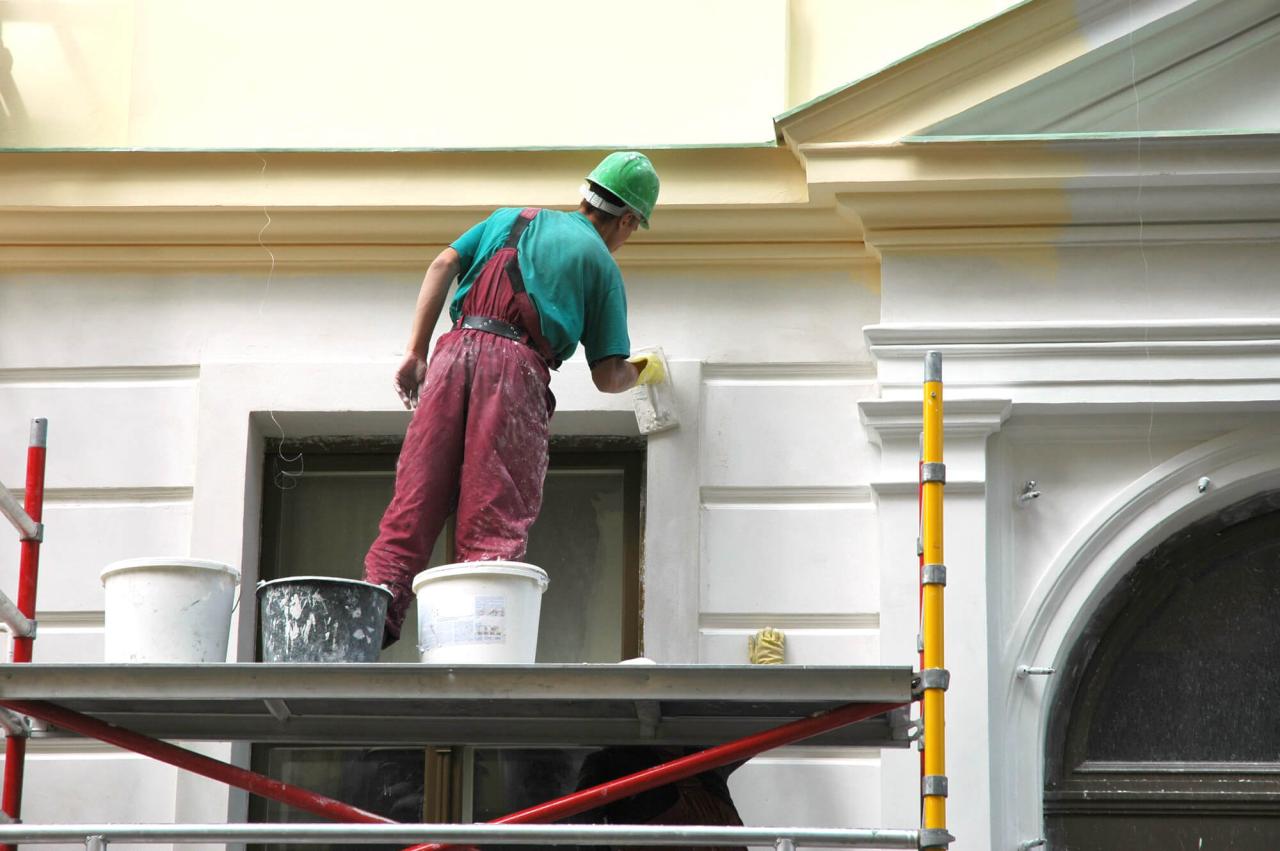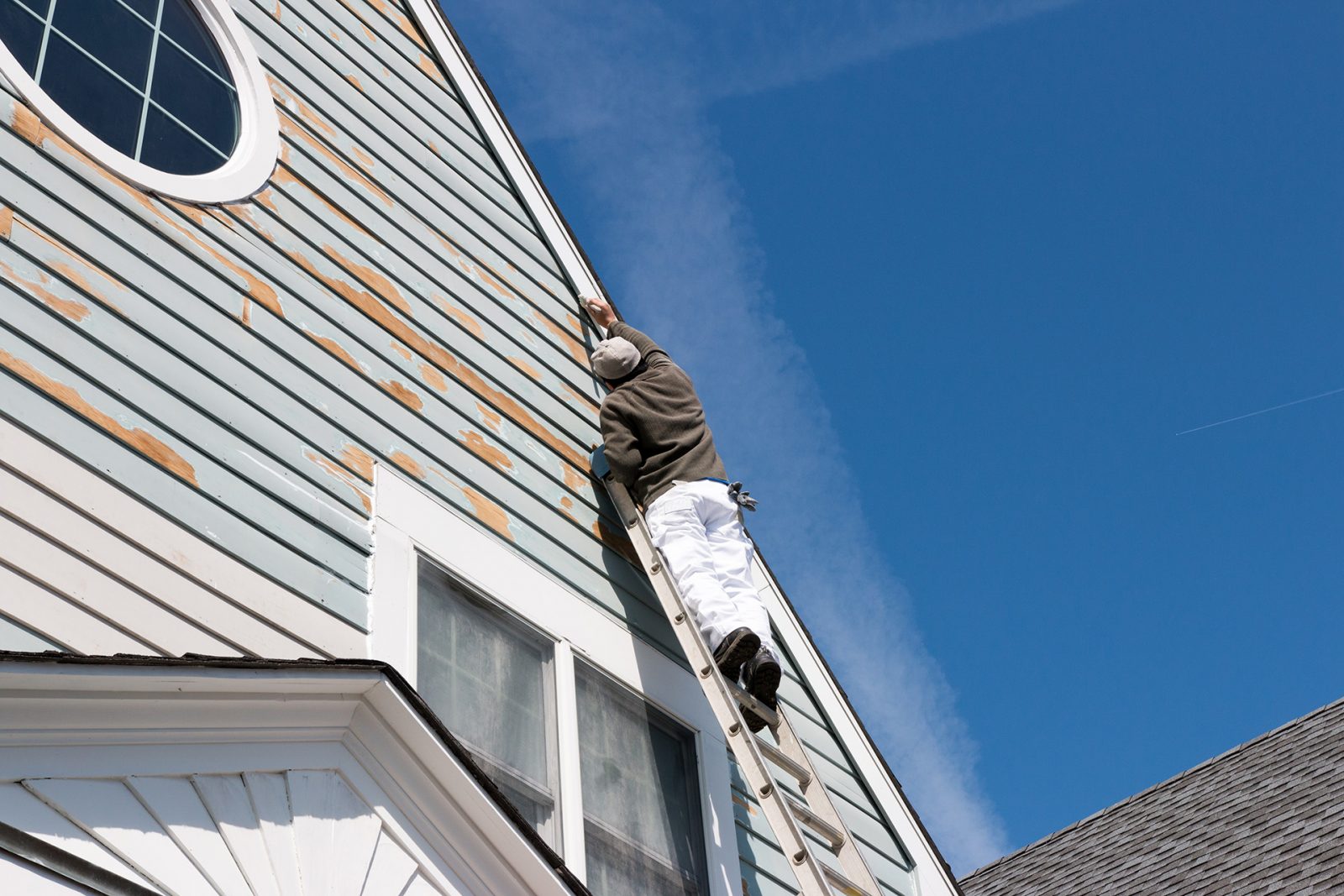Mastering the Art of Exterior Painting: Essential Skills, Techniques, and Safety Measures
Embark on a journey into the world of exterior painting, where skilled professionals bring life to dull surfaces with precision and finesse. From essential skills to safety measures, this guide covers everything you need to know about becoming an expert exterior painter.
When it comes to transforming the external appearance of buildings, the role of an exterior painter is crucial. Let’s delve into the intricacies of this craft and explore the key aspects that define a successful exterior painting project.
Being a professional exterior painter requires a specific set of skills and qualities to ensure the job is done efficiently and effectively.
Essential Skills for a Professional Exterior Painter
- Knowledge of different types of paints and finishes
- Ability to prepare surfaces properly before painting
- Attention to detail for precise and clean work
- Good physical stamina for long hours of work
- Excellent hand-eye coordination for intricate tasks
Importance of Attention to Detail in Exterior Painting
Attention to detail is crucial in exterior painting as it ensures a high-quality finish and long-lasting results. Properly covering all areas, neat lines, and consistent color application can make a significant difference in the overall appearance of a property.
Typical Tools and Equipment Used by Exterior Painters
- Paintbrushes and rollers for applying paint
- Pressure washers for cleaning surfaces
- Scrapers and sanders for surface preparation
- Caulking guns for sealing gaps and cracks
- Ladders and scaffolding for reaching high areas
Preparation for an exterior painting project
When embarking on an exterior painting project, proper preparation is key to achieving a successful and long-lasting finish. This involves several crucial steps to ensure the surface is ready for painting.
Surface Preparation
- Clean the surface: Remove dirt, grime, and any existing paint by pressure washing or scrubbing with a mild detergent. This step ensures better adhesion of the new paint.
- Repair any damage: Fill cracks, holes, and gaps with appropriate filler or caulk. Smooth out imperfections and sand rough areas to create a uniform surface.
- Scrape and sand: Remove loose paint using a scraper and sand the surface to create a smooth and even base for painting.
Significance of Priming
Priming is a crucial step in exterior painting as it provides a foundation for the paint to adhere to, enhances durability, and improves color vibrancy. A primer seals the surface, prevents stains from bleeding through, and helps the paint to bond effectively.
Impact of Weather Conditions
- Temperature: Extreme heat or cold can affect the drying time and application of paint. It is ideal to paint when the temperature is moderate for optimal results.
- Humidity: High humidity can cause paint to dry slowly and lead to issues like bubbling or cracking. Painting on dry days with moderate humidity is recommended.
- Rain: Avoid painting when rain is in the forecast as moisture can ruin the finish and result in uneven application.
Exterior painting techniques

When it comes to exterior painting, there are various techniques that painters can use to achieve a smooth and professional finish. Two common techniques are brushing and spraying, each with its own advantages and best practices.Brushing involves using a paintbrush to apply paint to surfaces manually.
This technique allows for more precision and control, making it ideal for detailed work and smaller areas. On the other hand, spraying involves using a paint sprayer to evenly coat large surfaces quickly. While spraying is more efficient for larger areas, it may require more preparation to protect surrounding surfaces from overspray.
Brushing vs. Spraying
- Brushing:
- Provides better control and precision
- Ideal for detailed work and smaller areas
- Requires more time and effort
- Spraying:
- Efficient for covering large surfaces quickly
- May require more preparation to prevent overspray
- Less physically demanding than brushing
Achieving a Smooth Finish
- Prepare the surface by cleaning and sanding it before painting
- Use high-quality paint and tools for a professional finish
- Apply multiple thin coats instead of one thick coat for even coverage
- Work in small sections to avoid drying lines and overlap wet paint
Painting Challenging Areas
- Use a smaller brush or roller for corners and edges for better control
- Mask off areas with painter’s tape to create clean lines and prevent paint bleed
- Work carefully and patiently to ensure even coverage in challenging areas
Safety measures for exterior painting

When embarking on an exterior painting project, it is crucial to prioritize safety to prevent accidents and injuries. Here are some essential safety measures to keep in mind:
Common safety hazards associated with exterior painting
- Working at heights: Falling from ladders, scaffolding, or roofs
- Exposure to harmful chemicals in paint: Inhalation or skin contact
- Electric shock: Contact with power lines or faulty equipment
- Tripping hazards: Cords, tools, or debris on the ground
Recommendations for using personal protective equipment (PPE) during painting
- Wear a respirator mask to protect against fumes and dust
- Use safety goggles to shield your eyes from splashes and debris
- Wear gloves to prevent skin contact with chemicals in the paint
- Use sturdy footwear with good grip to avoid slipping
Safety protocols to follow when working at heights during an exterior painting project
- Always use stable and secure ladders or scaffolding
- Ensure proper fall protection equipment such as harnesses and guardrails
- Avoid working on windy or rainy days to prevent instability
- Secure tools and equipment to prevent them from falling
Final Wrap-Up

As we conclude our exploration of exterior painting, it’s evident that this profession requires a unique blend of talent, technique, and safety awareness. Whether you’re a seasoned painter or just starting out, mastering these skills can elevate your work to new heights.
FAQ Summary
What are the essential skills required for a professional exterior painter?
Professional exterior painters need skills such as attention to detail, color matching, surface preparation, and knowledge of painting techniques.
Why is priming important before painting the exterior?
Priming helps seal the surface, improves paint adhesion, and ensures a uniform finish for the topcoat.
How can weather conditions impact the preparation process for exterior painting?
Extreme heat or humidity can affect paint drying times and adhesion, while rain can ruin freshly painted surfaces.
What are some common safety hazards associated with exterior painting?
Common safety hazards include working at heights, exposure to hazardous chemicals in paint, and slipping on wet surfaces.
What are the best practices for achieving a smooth finish on exterior surfaces?
Using high-quality paint, proper surface preparation, and applying paint in even strokes can help achieve a smooth finish.




